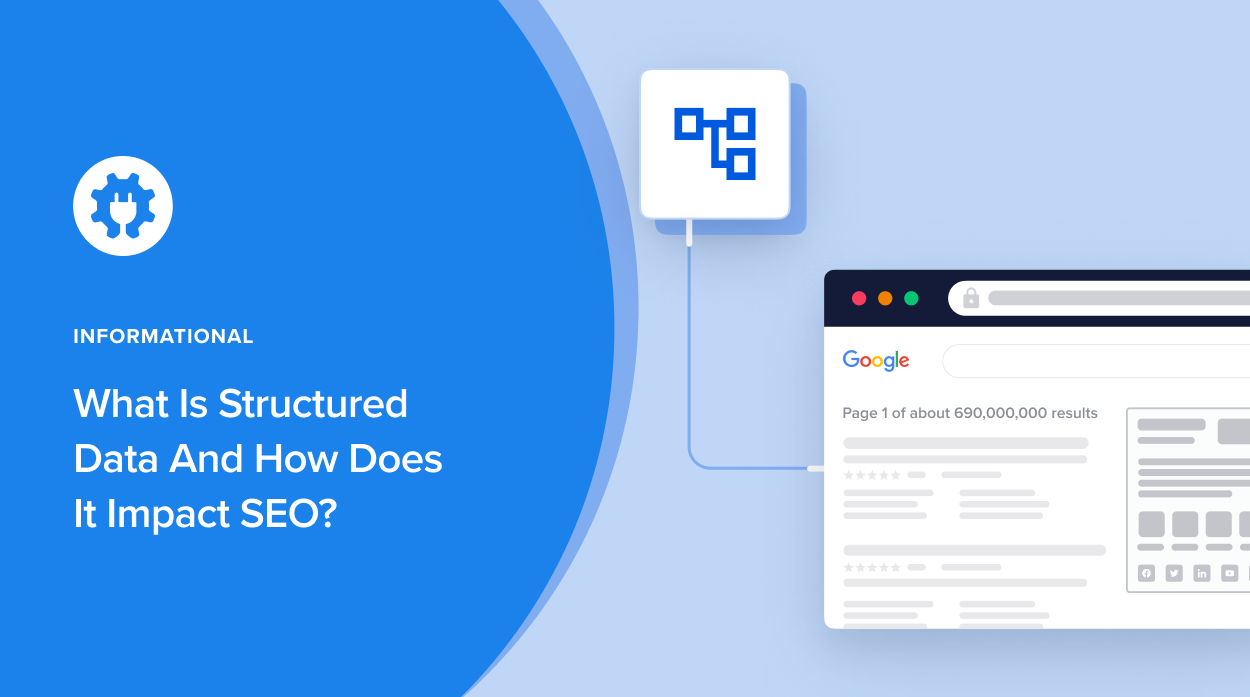Structured data in SEO refers to a standardized format for providing information about a page. It helps search engines understand a site’s content.
Structured data plays a pivotal role in modern SEO strategies, enabling search engines like Google to crawl, interpret, and display website content more effectively. By organizing information into a universally understandable format, structured data enhances visibility and improves search rankings.
Websites use this to highlight specific details such as products, reviews, and events directly in search results. This clarity not only boosts SEO performance but also enriches the user experience by making information easily accessible. Implementing structured data correctly can significantly increase a site’s chances of earning rich snippets, which are highly coveted for attracting more organic traffic. As the digital landscape becomes more competitive, leveraging structured data has become an essential practice for website optimization.

Credit: www.searchenginejournal.com
Introduction To Structured Data
Structured data is a key player in SEO today. It helps search engines understand your content better. This leads to better search results. Users find what they need faster. Let’s dive into the world of structured data.
The Role In Modern Seo
Structured data plays a vital role in modern SEO. It uses a specific format. This format talks to search engines directly. It tells them what your site and content are about. Search engines then use this info. They improve how they show your site in search results. Sites with structured data often appear as rich snippets. These are eye-catching and informative results.
- Rich snippets grab user attention fast.
- They provide key info at a glance.
- This can lead to higher click-through rates.
Using structured data correctly boosts your SEO efforts. It makes your content more visible and attractive to users.
Brief History And Evolution
Structured data has evolved over time. It started simple. Early web pages had basic HTML. This HTML lacked specific ways to mark different types of content. Then, schemas were introduced. Schemas are like blueprints. They tell search engines about the type of data on a page.
| Year | Development |
|---|---|
| 1990s | Early HTML, basic web structure |
| 2000s | Introduction of schemas |
| 2010s | Rich snippets become popular |
| Now | Structured data is key for SEO |
Schemas have grown. They now cover a wide range of data types. From articles and products to events and recipes. This evolution shows how important structured data is for SEO.
Types Of Structured Data
Understanding the types of structured data is key to SEO success. Search engines use structured data to better grasp page content. This helps in displaying rich snippets. Let’s dive into the common formats for structuring data.
Schema.org And Its Vocabulary
Schema.org provides a shared vocabulary for marking up web pages. It supports rich snippets in search results. Webmasters use Schema.org to help search engines understand content. The vocabulary covers formats for products, reviews, events, and more. It is a collaborative effort by Google, Bing, Yahoo!, and Yandex.
Here’s a list of popular Schema.org item types:
- Person: Details about individuals.
- Product: Information about products offered.
- Event: Specifics on events such as concerts.
- Organization: Data about companies and groups.
Microformats And Json-ld
Microformats are small patterns of HTML to represent data. They work well for contact information, events, and reviews. Microformats make it easy for search engines to pick up data.
JSON-LD stands for JavaScript Object Notation for Linked Data. It is a script-based format. Google recommends JSON-LD for structured data. It separates the script from the HTML. This makes it easier to add and maintain. JSON-LD is a powerful way to link data across the web.
Here is an example of JSON-LD in use:
Choose the right structured data format to enhance your SEO. Both microformats and JSON-LD have their uses. Schema.org’s vocabulary is extensive. It helps search engines understand your content better. This can increase visibility and click-through rates.
Benefits Of Implementing Structured Data
Structured data is a powerful tool for SEO. It structures information for search engines. This helps them understand and display content better. Let’s explore the benefits of implementing structured data.
Enhancing Search Engine Visibility
Structured data marks up content for search engines. It uses formats like JSON-LD, Microdata, and RDFa. This markup improves content understanding. It can lead to rich snippets in search results. These snippets stand out. They attract attention. This can make your content more visible.
Improving Click-through Rates
Rich snippets created by structured data can increase click-through rates (CTR). Details like ratings, images, and price range can show in search results. Users find this information useful. They are more likely to click on such results. A higher CTR can lead to more traffic. More traffic often means more conversions.
Structured Data And Rich Snippets
Understanding Structured Data and Rich Snippets is key in SEO. These elements help search engines understand content better. They also improve how search results appear.
How They Transform Search Results
Structured data marks up content for search engines. It uses a standard format. This format helps search engines display results more clearly. Users see enhanced search listings. These are known as rich snippets.
Rich snippets can show stars for ratings, images, or price ranges. They make search results more informative. They also increase click-through rates. Websites using structured data stand out. They draw more attention and traffic.
Real-world Examples
Examples of structured data in action are everywhere. Let’s explore a few:
- Recipe Websites: They display ratings, cooking time, and calories directly in search results.
- Product Pages: E-commerce sites show pricing, availability, and reviews.
- Event Listings: They reveal dates, locations, and ticket info at a glance.
These examples highlight how structured data benefits users. It provides quick, relevant information. This drives user engagement and satisfaction.
| Feature | Benefit |
|---|---|
| Enhanced Display | More clicks and interactions |
| Clear Information | Better user experience |
| Search Engine Understanding | Improved content relevancy |
How To Implement Structured Data
Structured data breathes life into website content for search engines. It’s the secret language that helps search engines understand the context and content of web pages. Correct implementation is vital for enhancing SEO.
Tools And Resources
Several tools can help implement structured data:
- Google’s Structured Data Markup Helper – Visual aid for tagging data
- Schema.org – Vocabulary for structured data
- Google’s Rich Results Test – Validates structured data
These resources ensure accurate and effective structured data implementation.
Best Practices For Implementation
Adhere to these best practices for optimal results:
- Review the latest guidelines on Schema.org
- Use JSON-LD format for ease of use
- Embed structured data directly in the HTML of web pages
- Test with Google’s Rich Results Test before going live
- Keep structured data up to date and accurate
Following these steps will enhance content visibility and searchability.

Credit: aioseo.com
Common Mistakes To Avoid
Structured data plays a key role in SEO. Yet, mistakes happen. Understanding these errors can boost a website’s performance. Let’s dive into common pitfalls and how to avoid them.
Overuse And Spamming
Overusing structured data can harm more than help. Websites sometimes add irrelevant or excessive markup. This confuses search engines. Aim for precise and relevant markup. Focus on quality, not quantity. This ensures better search engine understanding and ranking.
Incorrect Or Incomplete Markup
Errors in structured data markup are common. These mistakes can mislead search engines. Incorrectly labeled data won’t improve SEO. Incomplete markup misses opportunities. Verify your code with tools like Google’s Structured Data Testing Tool. This checks for accuracy and completeness.
- Review your structured data regularly.
- Use validation tools to check correctness.
- Update any outdated or incorrect information.
Remember, precise and relevant structured data enhances search engine visibility. Avoid overuse and ensure correctness for best results.
Measuring The Impact Of Structured Data
Structured data can transform SEO strategies. It helps search engines understand website content. This leads to better visibility and higher rankings. But how do you measure its impact? Let’s dive into ways to track and analyze the effectiveness of structured data.
Monitoring Rich Snippet Performance
Rich snippets stand out in search results. They can boost click-through rates. Monitoring their performance is key. Check for increases in traffic. Look at the click-through rates from search results. Use tools like Google Search Console. It shows how often rich snippets appear. It also shows how users interact with them.
Tools For Analyzing Structured Data
Several tools can help analyze structured data. Google’s Structured Data Testing Tool is popular. It checks for errors in your markup. Google Search Console provides insights too. It shows how structured data affects search performance. Other tools like SEMrush and Screaming Frog SEO Spider are useful. They find structured data on web pages. They also help optimize it for better results.
- Google’s Structured Data Testing Tool: Checks markup, finds errors.
- Google Search Console: Offers search performance insights.
- SEMrush: Analyzes and optimizes structured data.
- Screaming Frog SEO Spider: Finds and audits structured data.

Credit: medium.com
Future Of Structured Data In Seo
The Future of Structured Data in SEO is bright. It makes websites smarter by helping search engines understand content. This boosts your visibility online. Let’s explore the emerging trends and how to stay ahead with algorithm updates.
Emerging Trends
Structured data is evolving. Search engines favor it more each day. Here are the trends:
- Use of schema markup is growing.
- Rich snippets dominate search results.
- Voice search relies on structured data.
- Artificial intelligence uses it to understand context.
Preparing For Algorithm Updates
Search algorithms change often. Stay prepared with these steps:
- Update your website with the latest schema.
- Test your structured data with Google’s tools.
- Keep your content relevant and accurate.
- Monitor SEO news for the latest updates.
Frequently Asked Questions
What Is Structure Data In Technical Seo?
Structured data in technical SEO refers to formatted data that helps search engines understand and categorize page content, enhancing search visibility and rich snippets in search results.
What Is Structured Data With An Example?
Structured data is a standardized format for providing information about a page and classifying the page content. For example, schema. org markup on a recipe page can tell search engines the ingredients, cooking time, and temperature.
What Is Seo Structured Content?
SEO structured content is specifically organized and written to improve website visibility in search engines. It uses keywords effectively and follows SEO best practices, making it easier for search engines to understand and rank the content higher. This approach enhances user experience and drives more organic traffic.
What Is Structured Data In Google Search?
Structured data in Google search helps search engines understand website content. It uses specific formats to organize and label information, improving visibility and search rankings. This enhances rich snippets, making web pages stand out in search results with more detailed information.
Conclusion
Embracing structured data is essential for any forward-thinking SEO strategy. It clarifies your site’s content for search engines, enhancing visibility and driving traffic. Implementing this tool effectively can give your pages a competitive edge in the digital landscape. Start optimizing with structured data now to unlock your website’s full potential.


